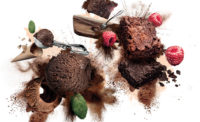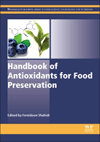An inside look at Barry Callebaut’s cocoa production in West Africa
Barry Callebaut proves cocoa quality and sustainability go hand-in-hand

Cocoa beans are dried in the sun. Photo courtesy of Barry Callebaut

Cocoa beans are fermented the “old-fashioned” way, in leaves.

Seema Kedia, senior manager of marketing and sustainability, Barry Callebaut
Seventy percent. That’s the figure that kept running through my mind as I stared at the landscape outside the air-conditioned van.
That landscape lay in the Ashanti region of Ghana, which was where I found myself late last November, a guest of Zürich-based Barry Callebaut, one of the world’s largest cocoa producers. The company had invited more than a dozen journalists to this part of West Africa to impress upon us the challenges it faces as it tries to secure a stable, sustainable supply of quality cocoa for the world’s delectation.
Seventy percent of the global cocoa supply — there’s that figure again — comes from this and five other regions in Ghana and from the neighboring West African nations of Ivory Coast and Cameroon. Yet as I looked out that van window, what I saw looked more like a child’s fantasy of an African forest than an agricultural heartland: broad waxy leaves in every shade of green, creeping orchids and rutted roads that turn what should be a 45-minute drive into a three-hour ordeal. (Helpful hint: Get bathroom breaks outta the way before you board the bus.)
So how, I wondered, is the majority of the world’s cocoa grown here?
With no small degree of difficulty.
“In the biggest cocoa-producing region in the world — West Africa — poverty runs rampant, children still work on cocoa farms, climate change is negatively impacting agricultural regions and decreasing yields have pushed farmers into protected forests,” noted Seema Kedia, Barry Callebaut’s senior manager of marketing and sustainability.
But if your job is to supply cocoa — as Barry Callebaut’s is — there’s no getting around these challenges; you can only confront and hope to eliminate them. Which is why the company brought us to Ghana in the first place: to witness its attempts to bring cocoa production into the 21st century — and to keep it going for centuries to come.
Humble pie
The view from the van was just the beginning. Over the three days that my fellow reporters and I were “in country,” we observed scenes that were truly humbling — in several senses of the word.
For one, I was humbled by the pride and hospitality with which the Ankyiren community farmers in the Ashanti Bekwai district welcomed us onto their farms to let us try our hands at harvesting a few ripe cocoa pods. I still cringe when I think of the damage we greenhorns could have inflicted upon their trees; proper cocoa harvesting is a learned skill, and if you do it wrong you can mess things up royally. And I was more than happy to let the pros take over after I almost sliced off my right thumb with a small machete in an attempt to break open a cocoa pod. Cocoa farming: It’s not for sissies.
Yet the very fact that these farmers still harvest their cocoa with machetes — and sickles evocatively dubbed “go to hells” — is another humbling sign of just how much work Barry Callebaut faces in modernizing cocoa production. So, too, is the continued use of banana leaves as cocoa fermentation vessels, or open-air sun exposure as the medium for drying the beans.
I was humbled further when we visited the Bekwai District Depot, site of local cocoa purchasing, primary and secondary evacuations, grading and sealing. The depot is, effectively, a large storage shed stacked to the ceiling with 64-kilogram sacks of fermented and dried beans. Workers poke into bags with electronic moisture meters — among the few pieces of automated equipment I saw — to ensure moisture levels don’t creep above the 7.5% at which mold might grow. Meanwhile, representatives from the Quality Control Company of Ghana’s cocoa regulatory board, known as COCOBOD, count beans one-by-one to determine the number per 100 grams, hoping for counts of 90 to 95, as beans of that size yield more useful nib and less inedible shell.
The work all appeared to be done manually, as was the recording of the data collected. You’ll find no networked computer terminals waiting to share these quality measures with parties at other nodes in the cocoa supply chain in this depot. Instead, such crucial information still gets entered onto paper logs, their pages dog-eared and smudged.
Hope for change
But paper records might not be the standard for long, as Barry Callebaut recently partnered with the multinational software corporation SAP, Walldorf, Germany, to launch a cloud-based system for collecting and managing cacao traceability, sustainability and quality data.
Called “Katchilè” — a word from the Ivory Coast’s Baoulè language meaning “change” — the system lets farmers in even the remotest locations use their mobile devices to provide information about themselves, their farms, their beans and their communities to every level of the company’s supply chain.
A product of Barry Callebaut’s Cocoa Horizons program, which the company launched in 2015 with the goal “to improve the livelihoods of cocoa farmers and their communities through the promotion of sustainable, entrepreneurial farming, improved productivity and community development,” Katchilè is a tool that helps Barry Callebaut get to know its farmer partners and understand what their farms are like, Kedia said.
“With Katchilè, we are able to assess the impact of our farmer trainings by measuring the yield and other productivity metrics per farm over time,” she said.
The assessments can drill down to the farm level because the program uses GPS data to map the coordinates for each farm — a major advance in cocoa farming and a necessary one in places such as Ghana, where cocoa farmers don’t always know where their land ends and someone else’s begins.
Farmers showed us the app on their phones and demonstrated the intuitive way in which it functions. About a year and a half after the system’s mid-2016 launch, it continues its rollout in Ghana, Ivory Coast and Indonesia, “covering more and more farmers every day,” Kedia said. And like much of what Barry Callebaut is doing on the ground, it’s already making a difference in farmers’ lives.
Sustainability efforts pay off in more ways than one
Zürich-based Barry Callebaut launched its Cocoa Horizons program in 2015 with the goal of improving the livelihoods of cocoa farmers and their communities “through the promotion of sustainable, entrepreneurial farming, improved productivity and community development,” according to the company.
But how do such efforts translate into cocoa quality improvements that an ice cream manufacturer or a chocolate milk supplier might notice, and be able to communicate to consumers?
Following a reporting trip to Ghana, West Africa, to see how Barry Callebaut implements some of its sustainability initiatives on the ground, Dairy Foods spoke with Seema Kedia, the company’s senior manager of marketing and sustainability, to learn how the relationship between sustainability and traceability efforts and quality improvements plays out in better cocoa and chocolate for dairy manufacturers.
What follows is an edited version of our discussion.
Dairy Foods: Poverty, child labor, climate change, decreasing yields — what other problems currently strain the world’s cocoa supply?
Seema Kedia: Many challenges are impacting the cocoa supply chain, and cocoa farmers directly. In addition to those you mentioned are limited knowledge and understanding of good agricultural practices, aging farms, depleted soil and a lack of financing options to invest in productivity activities.
Cocoa communities also often lack basic infrastructure and services, including schools, literacy and vocational training and access to safe water and basic healthcare services. And gender imbalance affects the sustainability of cocoa farming communities, with women having limited opportunities to build skills and generate income.
Dairy Foods: It almost makes a person want to quit and go home. But you aren’t. So in the face of challenges that seem insurmountable, why is Barry Callebaut betting it can make a difference?
Kedia: All of this points to the need in the industry for a step-change. If the children of cocoa farmers see their parents struggle, why would they want to follow in their parents’ footsteps and become the cocoa farmers of the future? They won’t. They’ll try to pursue opportunities elsewhere. This is why we need to help farmers lift themselves out of poverty, thereby eliminating the root cause of many of the previously mentioned challenges.
Dairy Foods: But this isn’t just a matter of charity. Improving cocoa farmers’ lots puts the cocoa industry on surer footing and improves cocoa quality, right?
Kedia: The issues mentioned above are serious problems — but a farmer that is implementing good agricultural practices as demonstrated in sustainability programs, who is taking great care with his or her farm and who focuses on the health and productivity of his or her trees and farm is going to more consistently produce quality cocoa. Care, attention and best practices will indeed produce a better quality outcome.
Dairy Foods: Well, how do we measure cocoa quality?
Kedia: Cocoa quality is determined by evaluating against a number of criteria, including but not limited to the moisture content of the bean, bean size, bean shape and quality of the fermentation process based on the resulting bean color. The quality of products made from cocoa beans such as chocolate and cocoa powder is evaluated against different criteria, but the quality of the beans used in those end products, of course, is an important factor.
Dairy Foods: Where in the bean-to-bar progression is quality at risk?
Kedia: Each stage of the bean-to-bar chain, from growing and harvesting to processing, provides opportunities to improve — or, on the flipside, decrease — the end product’s quality.
So from developing quality seedlings, planting them in appropriate shade, pruning trees properly and enabling appropriate levels of sunlight to reach the cocoa tree as it matures to harvesting, fermentation, drying, storing and processing cocoa — everything is going to impact the end product. It’s why you want the best agronomists, technicians, R&D teams and more to ensure a great-tasting product.
Dairy Foods: But the best agronomists, techs and teams don’t come cheap. Nor does Barry Callebaut’s heavy lift in trying to modernize cocoa production. Will responsible and sustainable cost more?
Kedia: Implementing activities to improve farmer livelihoods costs money, indeed. Sustainability programs come at a premium — to pay farmers more and invest in programs that’ll help them invest in their own future. When our customers understand what’s at stake and why it’s important for the future of cocoa and chocolate, most understand that business as usual isn’t an option if we want chocolate to be around forever.
Dairy Foods: Does Barry Callebaut want to “own” sustainability and traceability, or would you be perfectly content to see other players in the cocoa industry institute the same sorts of programs?
Kedia: The idea is to gain momentum so that programs like Cocoa Horizons positively impact farmers, the communities where we operate and the industry. The idea is for sustainable chocolate to become the norm. So we invite everyone to join us, to follow, to push forward with their own solutions — and to share knowledge so that we can all achieve a sustainable outcome together.
Looking for a reprint of this article?
From high-res PDFs to custom plaques, order your copy today!





